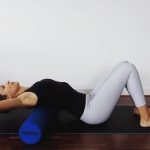I want to start cycling… Where do I start?
Cycling is a wonderful mode of exercise that attracts all ages. It can provide an outlet for adventure, a healthier commute to work, or a low-impact form of cardio. If you are interested in giving two wheels a go, there are a few things to consider.
1. Your Bike
The best place to start is finding a bike that is a good fit for you. There are guides that will give a reference for frame sizes based on your body measurements, however I suggest you present to a local bike shop as the staff will help you try a selection of options for the most comfortable fit.
Depending on what sort of riding you would like to do, there are different types of bikes to suit different purposes. For example, road bikes are built to be more lightweight and efficient but can be intimidating for a beginner, as they require a little more confidence in balance and steering, plus the more forward-leaning riding position may be less comfortable for the uninitiated. I often recommend a hybrid is a good option to begin with, as they are designed to promote stability and comfort, plus are versatile for riding on different surfaces.
There is no such thing as a perfect fit, as our body condition changes regularly, however a bike shop should be able to help you get going with the basic setup of your seat/handlebar position, and a saddle design to suit your needs. It is normal to make further adjustments along the way as you get used to riding. A physiotherapist with experience in bike fit can provide a more detailed analysis of your body on the bike and make appropriate recommendations to improve the fit.
2. Your Kit
Helmets are a must-have for most cyclists (there are some legal exemptions), and it is important to keep it in good condition. A helmet that has been visibly damaged (ie cracked) will likely have lost its protective qualities, but even dropping it on a hard floor may cause invisible changes to the supportive structure.
They may not look pretty, but padded shorts (or “knicks”) will be your friend, especially as a beginner, as the cushioning helps alleviate pressure points on the saddle. Many experienced cyclists will also wear their knicks without underwear to discourage chafing.
A pair of cycling gloves will also help reduce pressure and friction on the handlebars, which can lead to the formation of blisters or calluses.
It is worth investing in lights and Hi Vis/reflective gear to improve your visibility, particularly if you are considering riding on roads. When riding in dark/dreary conditions, in Victoria it is a legal requirement for cyclists to have a white (front) and red (tail) light bright enough that it is visible for 200m, in addition to a standard reflector. I find that using lights during the day also improves visibility in traffic.
3. Learn some basic maintenance skills
There’s nothing as annoying as being stranded several kilometres from your destination with a flat tyre and unable to do anything about it! Puncture repair kits are easy to carry on the bike, but you need to know how to use them! A little practice in the comfort of your own backyard can stop a renegade pointy object from ruining your afternoon. As well as online tutorials, there are a number of organisations around Melbourne that teach maintenance skills. Aside from saving some money on professional servicing costs, you can extend the longevity of the various mechanical parts, and keep the bike running more smoothly.
(ie ceres)
4. Learn the road rules!
You may be planning to stick to bike and shared pathways, however many established cycling routes are linked by short sections on roads, so it is important to be confident of the rules, even if you are not expecting to use them.
In Victoria cyclists must obey general traffic rules, but there are additional items that pertain specifically to cyclists. An excellent description is provided by the Victoria Law Foundation here, which may also provide ideas for strategies to improve your safety when negotiating on-road cycling.
https://www.legalaid.vic.gov.au/sites/www.legalaid.vic.gov.au/files/vla-resource-bike-law.pdf
5. And finally… time to start riding!
Cycling suits people of all shapes and sizes, and many prefer the low-impact nature. However, like any form of physical activity, it is possible to overdo it, which is easiest to do when you are just starting out.
It is best to start off with short, easy rides, avoiding steep hills or difficult terrain. It is a good idea to practise using your gears and learning handling skills in a safe environment away from busy paths or traffic. Your body will also need time to adjust to new movement patterns and to develop a tolerance for the saddle.
Aiming for more regular rides (ie 2x per week) is a good frequency to improve comfort quickly. Otherwise, you may find it takes a while to condition yourself.
Over time you can gradually increase distances, and add in new challenges. There are plenty of groups you can join for regular organised rides suitable for a range of abilities. Otherwise, there are a range of organised events across the year that allow you to set a fitness goal and experience riding in places you may not normally visit on two wheels.
If you do find niggles developing, you can refer to my previous blog for basic troubleshooting (click here for common niggles for cyclists). Otherwise, an appointment with a physiotherapist knowledgeable about cycling can help identify and manage the source of discomfort.
Written by our Bike Fit Physiotherapist, Rosie Moore






